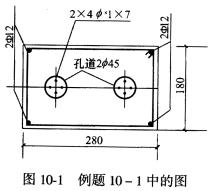 题目内容
(请给出正确答案)
题目内容
(请给出正确答案)
4 At an academic conference, a debate took place on the implementation of corporate govern
developing countries. Professor James West from North America argued that one of the key needs for developing
countries was to implement rigorous systems of corporate governance to underpin investor confidence in businesses
in those countries. If they did not, he warned, there would be no lasting economic growth as potential foreign inward
investors would be discouraged from investing.
In reply, Professor Amy Leroi, herself from a developing country, reported that many developing countries are
discussing these issues at governmental level. One issue, she said, was about whether to adopt a rules-based or a
principles-based approach. She pointed to evidence highlighting a reduced number of small and medium sized initial
public offerings in New York compared to significant growth in London. She suggested that this change could be
attributed to the costs of complying with Sarbanes-Oxley in the United States and that over-regulation would be the
last thing that a developing country would need. She concluded that a principles-based approach, such as in the
United Kingdom, was preferable for developing countries.
Professor Leroi drew attention to an important section of the Sarbanes-Oxley Act to illustrate her point. The key
requirement of that section was to externally report on – and have attested (verified) – internal controls. This was, she
argued, far too ambitious for small and medium companies that tended to dominate the economies of developing
countries.
Professor West countered by saying that whilst Sarbanes-Oxley may have had some problems, it remained the case
that it regulated corporate governance in the ‘largest and most successful economy in the world’. He said that rules
will sometimes be hard to follow but that is no reason to abandon them in favour of what he referred to as ‘softer’
approaches.
(a) There are arguments for both rules and principles-based approaches to corporate governance.
Required:
(i) Describe the essential features of a rules-based approach to corporate governance; (3 marks)
 如果结果不匹配,请 联系老师 获取答案
如果结果不匹配,请 联系老师 获取答案


 更多“4 At an academic conference, a…”相关的问题
更多“4 At an academic conference, a…”相关的问题
 mm2),截面280mm×180ram,每个孔道布置4束φsl×7,d=12.7mm(A。=790mm2)普通松弛钢绞线,非预应力钢筋采用HRB335(fy=300N/mm2),4Ф12(As=452mm2),采用后张法一端张拉钢筋,张拉控制应力σcon=0.75fs,孔道直径为2φ45mm,采用夹片式锚具,钢管抽芯成型,混凝土强度达到设计强度的80%时施加预应力。 试:计算(1)净截面面积An;换算截面面积A0。 (2)预应力的总损失值为多少?
mm2),截面280mm×180ram,每个孔道布置4束φsl×7,d=12.7mm(A。=790mm2)普通松弛钢绞线,非预应力钢筋采用HRB335(fy=300N/mm2),4Ф12(As=452mm2),采用后张法一端张拉钢筋,张拉控制应力σcon=0.75fs,孔道直径为2φ45mm,采用夹片式锚具,钢管抽芯成型,混凝土强度达到设计强度的80%时施加预应力。 试:计算(1)净截面面积An;换算截面面积A0。 (2)预应力的总损失值为多少?















